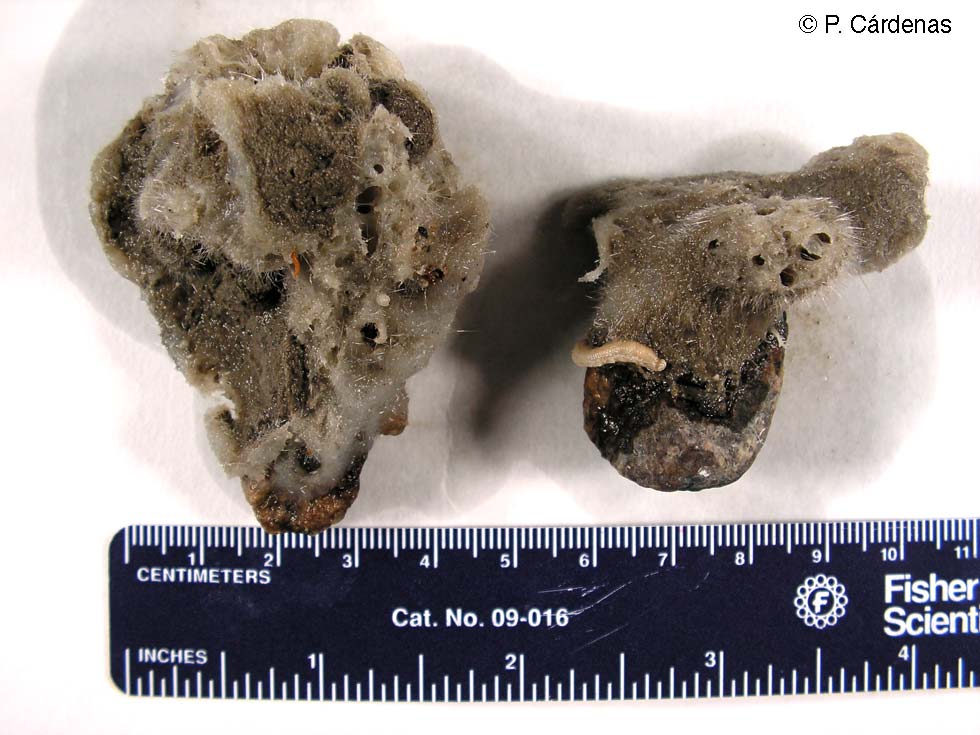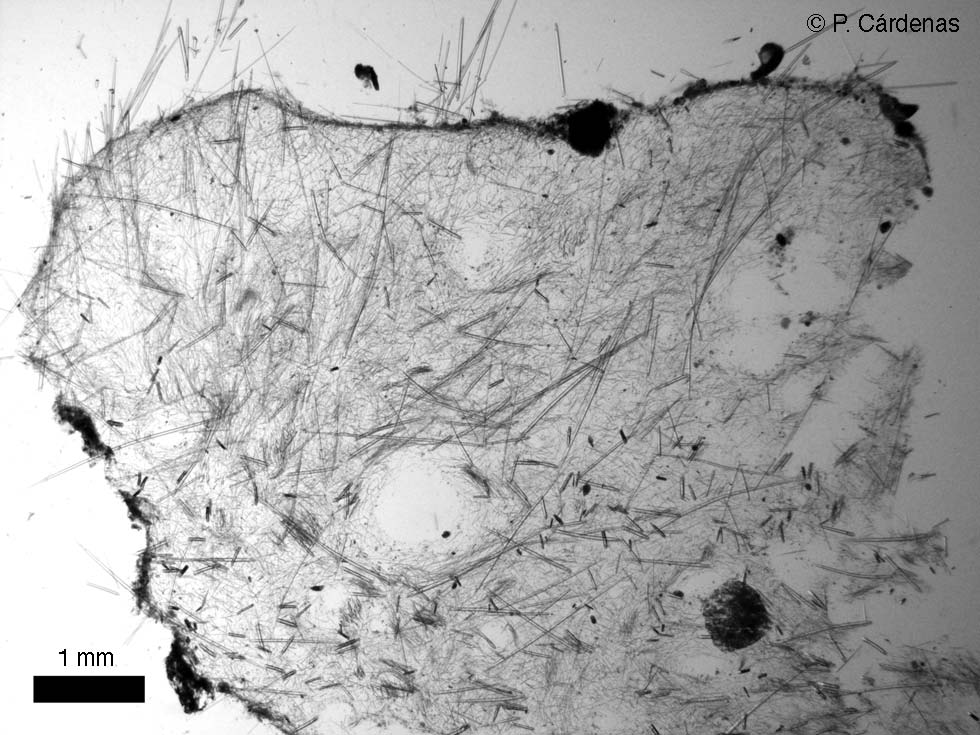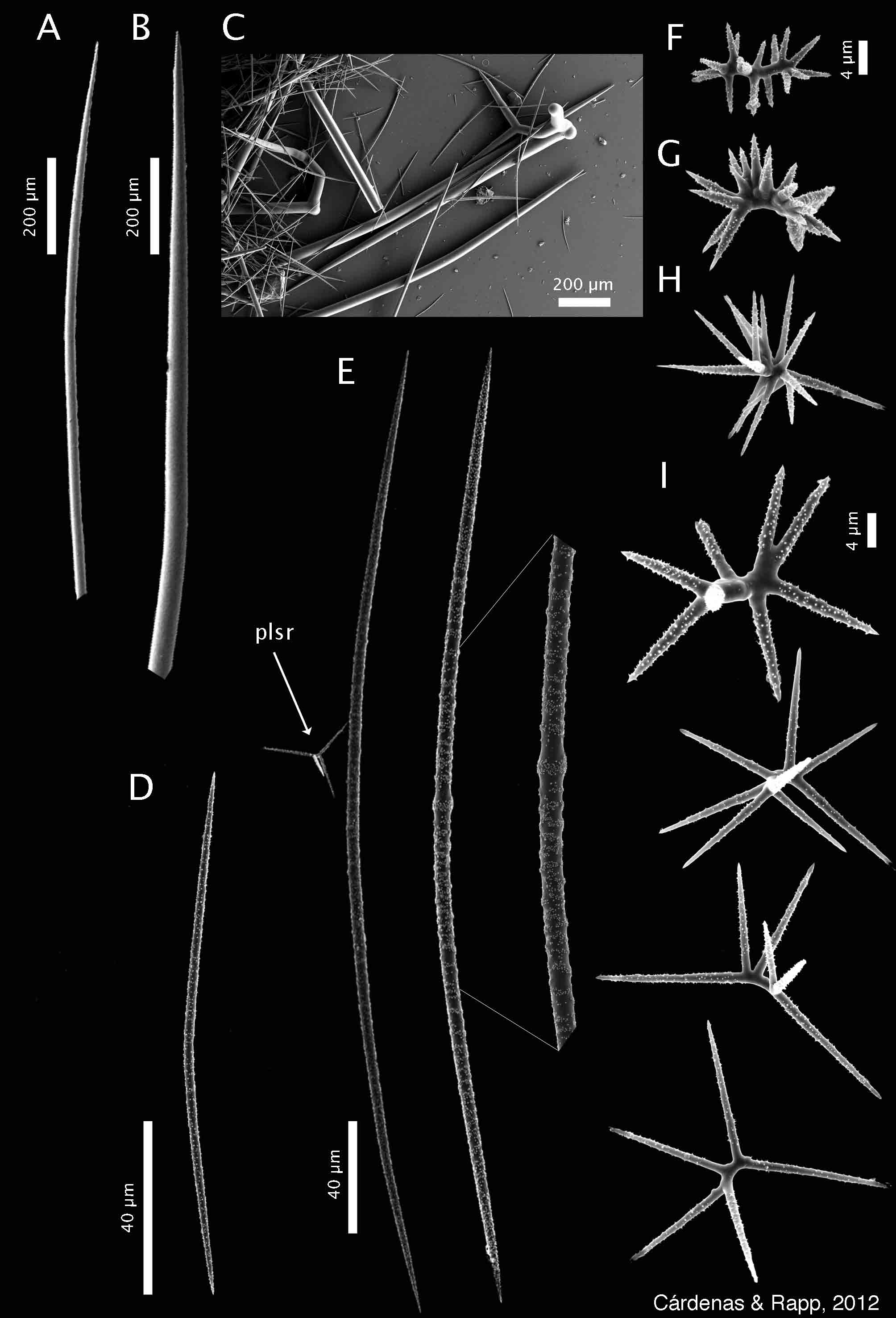Morphological description (show/hide)
| Massive sponge, broken up in several fragments. | | whitish | | whitish | | Oscule openings in the sieve are fairly large (exhalant apertures are 0.5-2 mm). Pores were not found. | | compressible | | Surface is irregular, strongly hispid and dirty | | Confused. Plesiasters are abundant in the choanosome, as well as microxeas. Spirasters are rare. | | Accumulation of spirasters and paratangential microxeas at the surface. This layer is ca 150 µm thick, thus invisible to the naked eye. Orthotriaenes and dichotriaenes are only present at the surface, albeit in low numbers. They are more or less positioned radially, with their cladomes beyond the surface. Oxeas I and some oxeas II also cross the surface. | | (a) oxeas I, long and thin, isodiametric, length: up to 5000 µm; width: 3.0-6.3-14.5 µm. (b) oxeas II, stout, usually bent, smooth, length: 1921-2789-3473 µm; width: 21.0-43.6-70.0 µm. (c) ortho- and dichotriaenes, few, usually with deformities such as irregular or additional clads, rhabdome length: 152-892-1315 µm; rhabdome width: 23.0-37.6-62.0 µm; clad length for orthotriaenes: 183.0-392.9-566.0 µm (N=15); clad length for dichotriaenes: 70.0-99.0-129.0 µm + 72.0-135.0-194.0 µm (N=12). | | (d) microxea I, faintly microspiny, bent or straight, often centrotylote, length: 317-397.8-520 µm; width: 5.0-6.0-8.0 µm. (e) microxea II, faintly microspiny, bent or straight, length: 181-239.2-245 µm; width: 3.0-3.2-4.0 µm. (f) microxea III, faintly microspiny, straight or bent, length: 67.0-116.2-166.0 µm; width: 2.0-2.0-2.0 µm. (g) streptasters, all intermediates exist between spirasters, metasters, and plesiasters. Metasters and plesiasters often have a bow shaped shaft with the middle actines all on the same side, length: 14.0-25.0-39.0 µm. |
|





